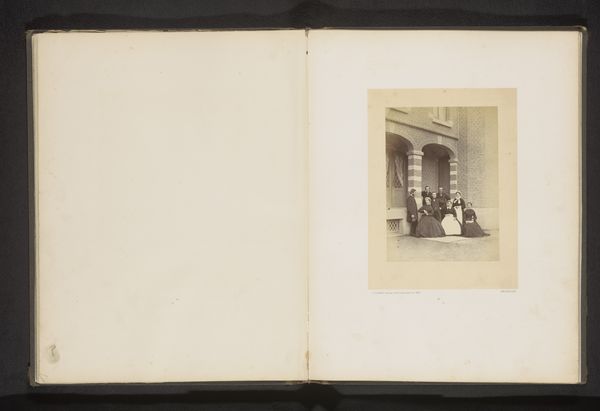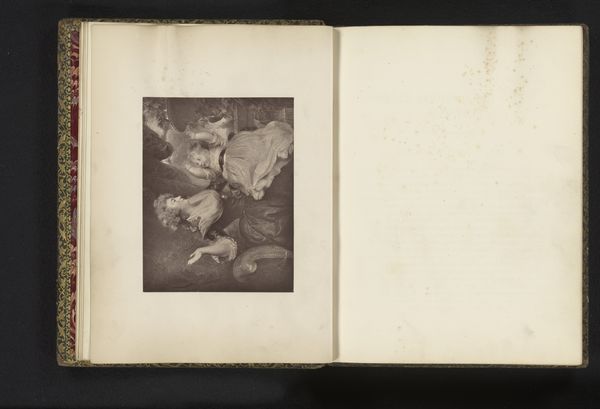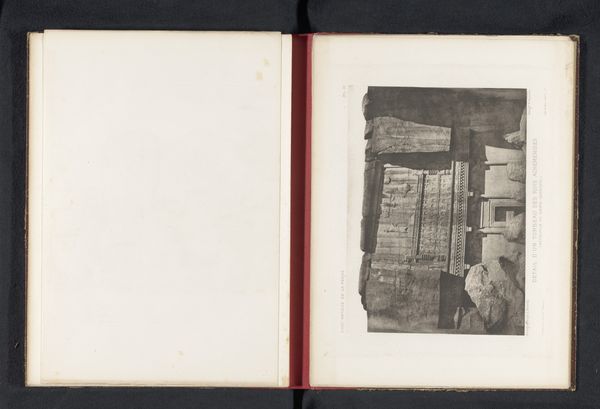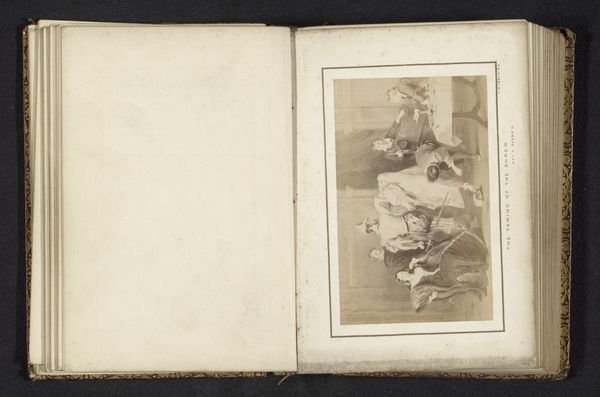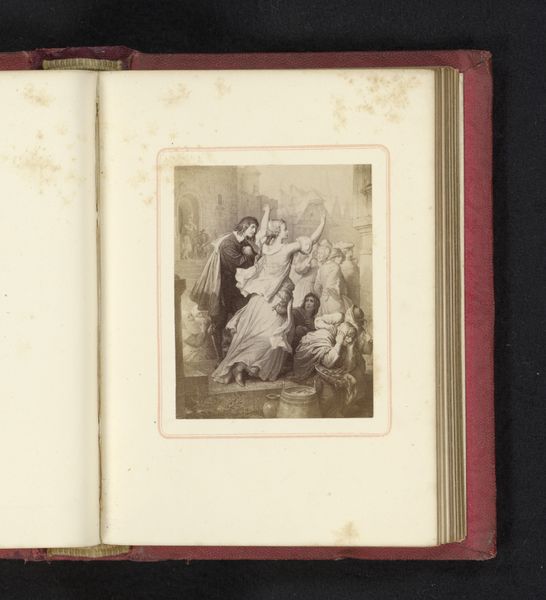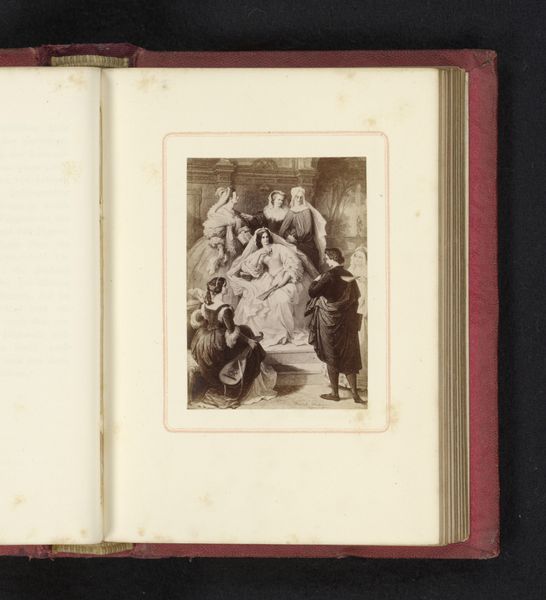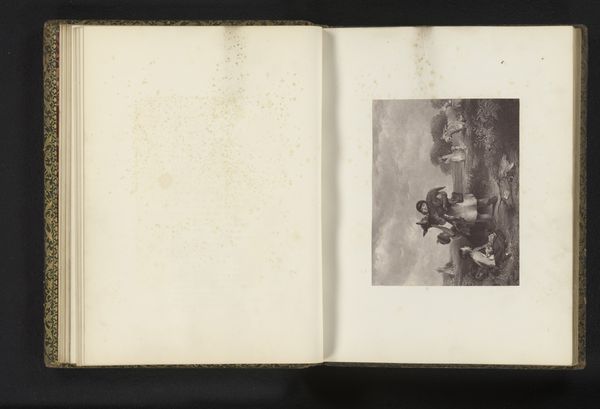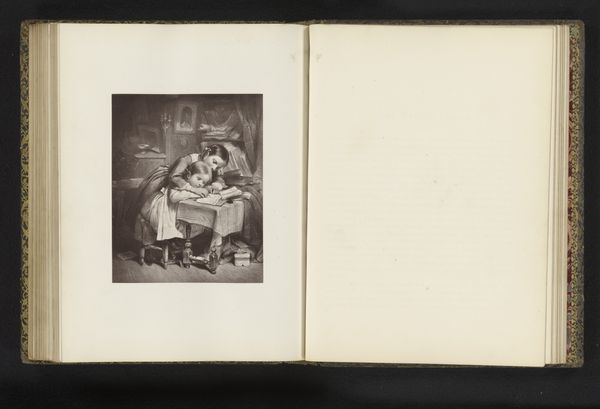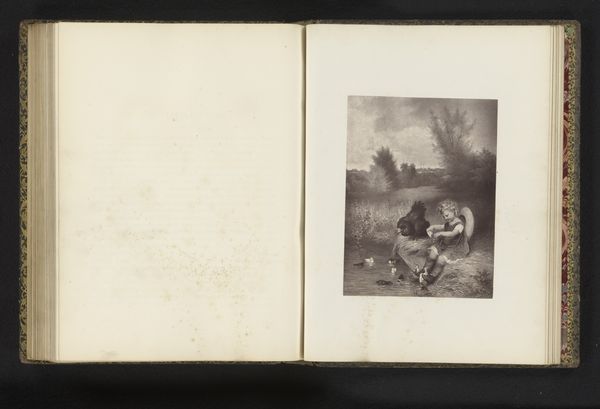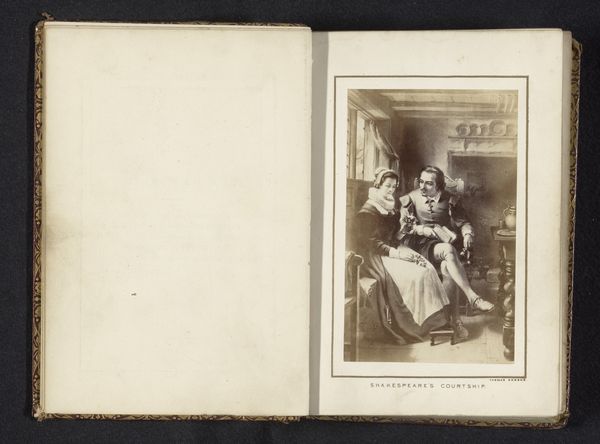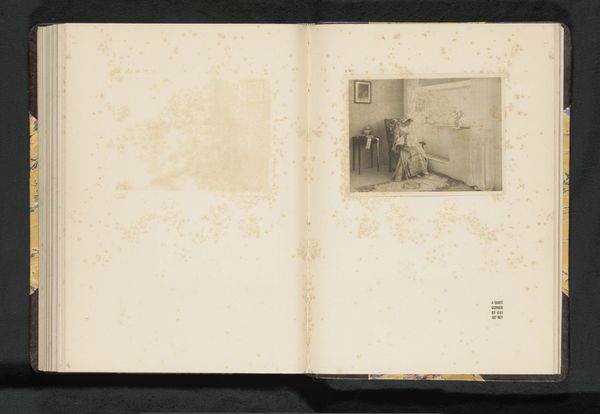
Fotoreproductie van een gravure naar het schilderij The keeper's daughter door William Powell Frith before 1871
0:00
0:00
Dimensions: height 150 mm, width 21 mm
Copyright: Rijks Museum: Open Domain
Editor: Here we have a photographic reproduction of "The Keeper's Daughter," a painting by William Powell Frith, probably from before 1871. It’s rendered here as a lithograph, etching, or print. There's a stillness to the scene; a woman calmly surrounded by dogs. What can you tell me about it? Curator: It's a fascinating image, especially when considering the cultural context. This genre scene presents a seemingly simple, perhaps even idyllic, portrayal of a woman in her domestic sphere. However, it's crucial to deconstruct the underlying narratives at play here. What do you make of the woman’s apparent position of power, surrounded by these dogs, seemingly dependent on her care? Does it challenge or reinforce societal expectations of women during this time? Editor: It does feel a bit…idealized. She looks quite serene and well-dressed, not necessarily like someone who spends her days tending dogs. Maybe it reflects a romanticized vision of rural life? Curator: Precisely. Romanticism often glossed over the harsh realities of everyday life, particularly for women and the working class. Now consider the implications of the 'keeper' in 'keeper’s daughter.' What did it mean for a woman’s identity and social standing to be tied to her father's occupation in 19th-century England? And how does this relate to the broader socio-political landscape of gender roles and class structures? This print serves as a reminder that images, especially those seemingly innocuous genre scenes, can be powerful tools in shaping and perpetuating social norms. Editor: I see what you mean. Looking at it now, the image prompts a lot more questions than it answers. I initially saw a calm domestic scene but you pointed out hidden social commentaries. Curator: It's a good reminder for both of us that art acts as a time capsule of identity, class, and societal expectation.
Comments
No comments
Be the first to comment and join the conversation on the ultimate creative platform.
